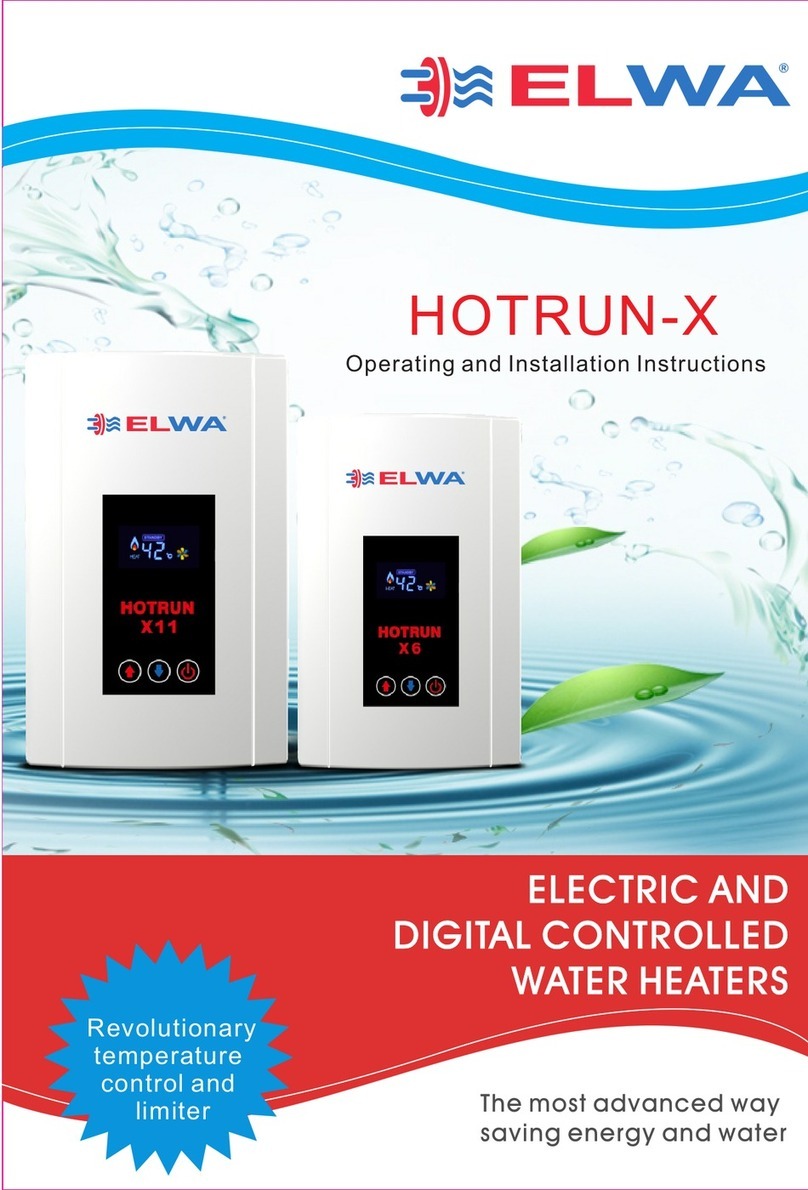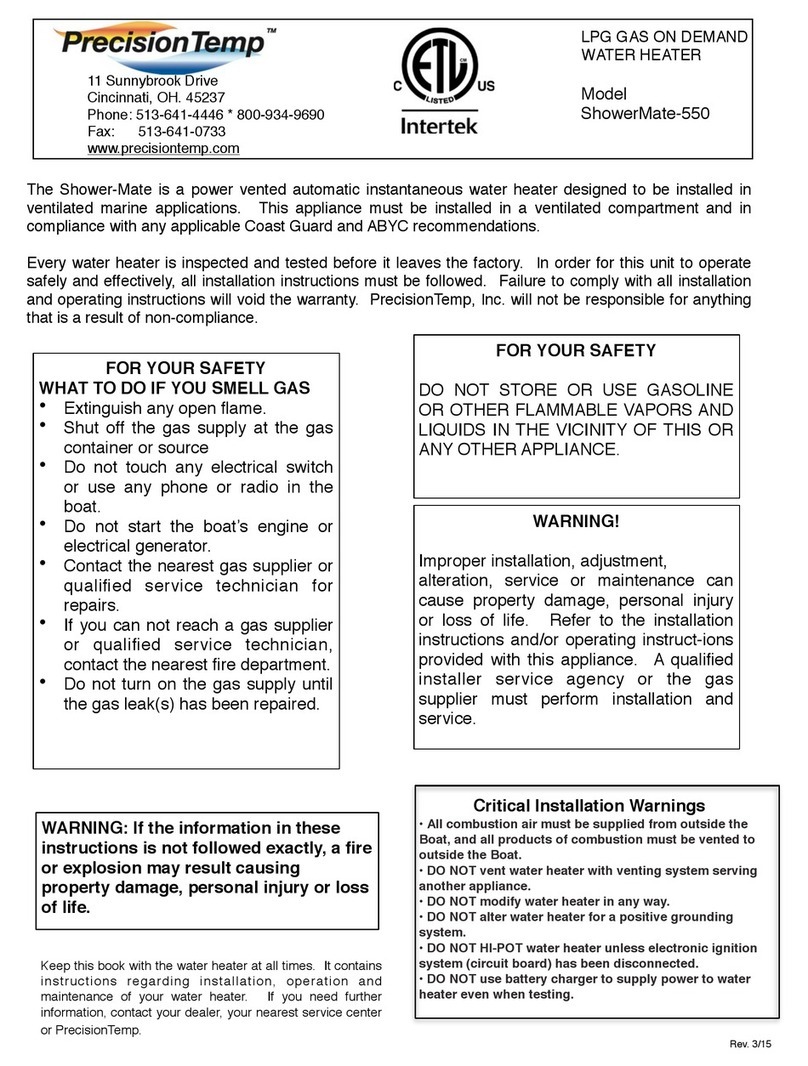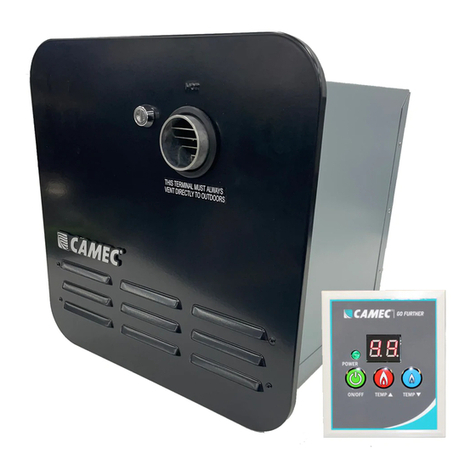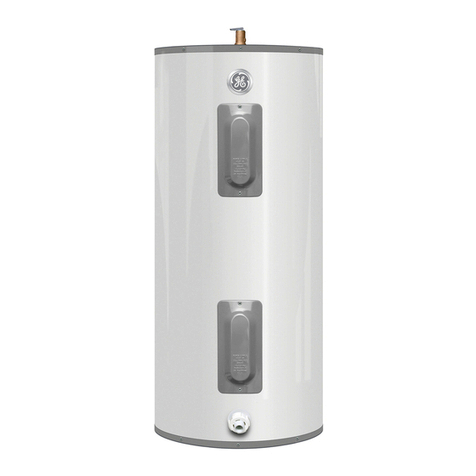Advance Appliance SFUTS 210 User manual

advance
app
l
ances
INSTALLATION AND
USER GUIDE
ADVANCE UNIVERSAL
MULTI-FUEL THERMAL
STORE
ADVANCE APPLIANCES LTD
PLEASE RETAIN AND ENSURE SERVICE RECORDS
ARE KEPT UP TO DATE.
ISSUE 5
0914

SCHEMATIC DIAGRAM OF UNIVERSAL THERMAL STORE
2
RELIEF VALVE (SEALED SYSTEM)
F&E TANK
(IF VENTED)
TOP SENSOR POCKET
FOR SOLAR
NON ADJUSTABLE HIGH
LIMIT THERMOSTAT
BLENDING VALVE/
DHW OUT
COLD MAINS IN
SERVICE VALVE
HEATING FLOW 28MM
BOILER THERMOSTAT
SOLAR SENSOR POCKET
WOOD BURNER
THERMOSTAT
HEATING
RETURN 28MM
DRAINEXTRA 28MM TAPPING/
ALTERNATIVE BOILER
RETURN
WOOD BURNER RETURN
WOOD BURNER FLOW
SOLAR COIL
BOILER RETURN 28MM
EXPANSION VESSEL/
SHOCK ARRESTOR
THERMAL SAFETY
VALVE (SEALED
SYSTEM)
DISCHARGE TUN
DISH 22 28MM
(SEALED SYSTEM)
BOILER FLOW 28MM
3KW IMMERSION HEATER
IMPORTANT: Gravity circulation must be achievable through the store from the wood-
burner. The store must be on the same level or higher - see diagram on page 6.
Note: The immersion heater supplied is fitted with a thermal cut out. This is an essential
safety requirement, and immersion heaters without thermal cut outs must not be used.

INTRODUCTION
OPERATION
The Advance Universal Thermal Store linking system is a major step forward in the design and
operation of thermal store systems, allowing for a number of heat inputs to work together for
a fully flexible vented or sealed central heating and mains pressure hot water system.
Traditional boilers can be used to heat the thermal store (or heat bank as it is sometimes
called). Any boilers used in conjunction with this product should be provided with a boiler
thermostat and energy cut out set such that under no circumstances can the primary flow
temperature exceed 100°C.
If there is any possibility of gravity circulation from the boiler then consideration should be
given to fitting a zone valve and by-pass on the boiler flow circuit wired to close once the
store temperature thermostat is satisfied. This also prevents boiler over-run reducing the
temperature of the store.
Other appliances can be used by feeding the flow and return into different positions on the store.
These tappings can be used for low input devices such as solid fuel stoves, heat pumps, biomass,
cookers and so on. The bottom coil is for a solar input, but can also be used for other suitable
inputs. Two 3kw immersion heaters are fitted, a low position 3kw immersion heater which can
assist on extremely low temperature days and a mid position one for hot water boost if needed.
Central heating is drawn from side tappings.
Insulation on this store is excellent, 60mm thick, foam injected with a smart outer case.
The store is capable of working up to 3 bar pressure, making it suitable for all heating
circuits, including underfloor, either sealed or open systems.
Hot water is supplied through an efficient internal heat exchanger at mains pressure for fast,
safe hot water delivery and is controlled by a pre-plumbed fitted manifold with blending valve
and shock arrestor fitted for easy installation.
Note: Units operate at 75°C and heat pumps cannot be the prime heating source.
Solar and Ancillary inputs
We can only offer general advice regarding external appliances and fittings. The first rule is
to follow manufacturer’s instructions. Use the sensor pockets to control the inputs on the
store, and use the top pockets as overheat protection for solar and solid fuel installations.
In summer - the solar season can run from April to September - wood burners, boilers and
other inputs other than solar should not be necessary, as solar input should exceed the
likely hot water requirements during this season. You can set the solar control to 80 degrees
in the tank, giving ample hot water for domestic needs. An extra pocket is fitted into the
store for solar over heat protection.
In installations where the thermal store is sited above the solar collector panels then if gravity
circulation is possible through the solar pump an additional zone valve may be required.
3

VENTED OR SEALED S STEMS
The Universal can be vented or sealed. If it is vented the top connection of the tank is where
the vent pipe (22mm) should be installed and the feed can be into the drain point (15mm) or a
negative point on the system.
A vented version will not have the relief valve, the thermal safety valve or pipework and tun
dish fitted.
The relief valve is there in case of over pressurisation in a sealed system. It is not an over-
heat protection device. It is recommended that another pressure relief valve is fitted in open
circuit as additional over pressure protection in a sealed system.
Always remember when calculating expansion on a system to include store volume. See page 8.
It is possible to install another fuel source with a boiler in a sealed system. Control is the key,
along with the appropriate levels of safety. Gas or oil boilers are controllable devices and hi-
limit thermostats on the store will suffice along with the relief valve as these appliances have
their own in built protection.
Some solid fuel appliances have built in protection where heat exchangers can be water cooled for
example, and these are preferred in sealed systems. However, it is possible to use other types and
we would refer you to the next section showing our pre wired pre plumbed SFUTS.
The immersion heaters should not be required during the solar season, although the top one
can be wired to a switched spur for any essential top up.
The immersion heaters should be set at 75°C.
Note: The immersion heater supplied is fitted with a thermal cut out. This is an essential
safety requirement, and immersion heaters without thermal cut outs must not be used.
As it is a thermal store, thermal disinfection is not needed.
Some degree of experimentation in operation is likely as different systems will have different loads
placed upon them.
Solid fuel systems are ideal – biomass, wood burning stoves or cookers can all be connected. It is
possible to meet sealed system G3 requirements of Building Regulations by using the fully
assembled SFUTS where the wiring and plumbing is provided.
Ancillary input is generally of an intermittent nature – for example a wood burner is usually only lit
during certain periods of the day and should not be used at all in warmer weather where solar may
be more appropriate. It is recommended that a gas/oil boiler is used with any intermittent heat
source. Whilst it is possible to use electricity it can be expensive and off peak tariffs are preferred.
Heat pumps are an option but it must be understood that the store operates at 75°C. It is essential
that a heat source such as a gas or oil boiler is used for top up and that they achieve at least 75°C
output. Each input has a dedicated thermostat so 75°C is easy to achieve with a wood burner for
example and will result in substantial savings on gas or oil bills.
4

Universal
Thermal store cylinder
Wood burner
Heat Leak
(T
Piped for
gravity
owel Rail)
Boiler flow
Boiler return
Pump 1
Blending Valve
ĂŶĚĮƩĞĚƐĞŶƐŽƌ Pump 2 (Solid Fuel)
Pump
3
Pipe
stat
Htg flow
Htg return
Dual stat 1
Dual
stat
2
Injector Tee
(Boiler)
;,ĞĂƟŶŐͿ
The SFUTS (Solid Fuel Universal Thermal Store) takes the worry out of installation. It offers a fully
integrated store with all relevant controls and safety features. It has three pumps fitted - a boiler
pump, a heating pump and a re-circulator for the solid fuel device to aid heat up and stratification
when the appliance is first lit. The sensor head can be adjusted, we recommend 50°C to 60°C.
The sensing probe must be left as supplied, strapped to the pipework.
A heat sink (towel radiator or similar) needs to fitted as shown in the schematic. Two dual
thermostats with over-heat protection are fitted (the third is for solar and is left to the installer)
and a thermal safety valve is fitted in sealed heating circuits, plumbed in with the pressure relief
valve to tun-dish discharge. This valve is thermo-mechanical and will work in the case of an
interruption to electrical supply.
A 3amp supply from a fused spur is recommended, and you will need to wire a programmer/
room thermostat to the fitted junction box. Means for disconnection of the supply must be
incorporated in the fixed wiring in accordance with the wiring rules. The mains supply wiring
must be fixed in a way that prevents it coming into contact with hot parts (those that can
experience a temperature rise of >50°C), or, that the insulation of the mains supply wiring must
be protected, for example, by insulating sleeving having an appropriate temperature rating.
A pipe thermostat is supplied loose (but electrically connected) to mount about a metre away
from the solid fuel appliance on the flow pipe. This thermostat senses when the appliance is
lit/turned on. Wiring instructions come with the unit. The wiring centre is labelled for 3amp
(50HZ) mains input, switched live boiler and programmer connections.
If the supply cord or any wiring on the store is damaged, it must be replaced by the manufacturer,
its service agent or similarly qualified persons in order to avoid a hazard.
You will need to connect the boiler flow and return pipes, the solid fuel flow and return and the
heating flow and return. Pumps are fitted and pre wired. The solid fuel circuit contains an injector
tee, pump and blending valve to prevent cold water being returned to the wood burner.
The unit meets the requirements of G3.
SFUTS SCHEMATIC
This schematic is for solid fuel pumped circulation.
Note: A heat sink must be fitted
5
SFUTS FULL WIRED AND PLUMBED FOR SOLID FUEL
WITH GAS/OIL BOILER ETC

6
INSTALLATION
Ensure the unit is installed on a flat surface and that all tappings are accessible for future
maintenance. Make sure the floor will support the full weight of the unit.
The system must be inhibited with a suitable proprietary brand taking account of the store
volume. If vented the feed and expansion tank must be at the highest point in the system. A metal
feed and expansion tank is preferred.
An expansion vessel of suitable capacity must be installed in sealed systems taking into account
the total volume of the heating circuit and thermal store (see page 8).
Install a proprietry filling loop system with flexible hose, isolation valve, 3 bar relief valve,
expansion vessel and pressure guage. Fill to 1 bar cold. The filling loop should be installed to
prevent back-siphonage.
The relief valve and discharge arrangement is fitted with the thermal safety valve in sealed heating
systems. This is a mechanical device (non-electrical) which opens at 97°C and draws cold water
through the hot water coil to dissipate heat in the store. It runs via a tun dish which should be
connected via 28mm pipe to a safe low level discharge point, follow G3 advice here. The water
may drip from the discharge pipe of the pressure-relief device and this pipe must be left open to
the atmosphere. The pressure-relief device is to be operated regularly to remove lime deposits and
to verify that it is not blocked.
A discharge pipe connected to the pressure-relief device is to be installed in a continuously
downward direction and in a frost-free environment.
The thermal safety valve gives the third level of protection necessary to meet G3.
An expansion (pressure relief) valve must be fitted into the heating circuit in addition to the relief
valve on the tank.
Unless using the SFUTS, for solid fuel appliances refer to manufacturer’s instructions, especially
with regard to heat sinks and so on. Always install a heat sink that will work on gravity between
the store and the solid fuel appliance.
Store
Wood burner
Heat sink
Note: In the above case the wood burner must have a quench pipe system to protect against overheating
SCHEMATIC WITH LOOP

HOT WATER
If hardness exceeds 200ppm, use a treatment to soften water.
Scale build-up can happen rapidly and reduce flow and efficiency.
Always flush after commissioning but DO NOT USE heavily chlorinated solutions unless you are
prepared to thoroughly flush the whole heating system after heat up and cool down.
If flow is poor check incoming water supply and make sure all valves etc. are fully open.
If temperature is poor check that the store has reached 75°C and that the blending valve is set
at the appropriate temperature.
Use inhibitor in heating systems. Remember to include the store volume when dosing.
The SFUTS version is pre-wired and pre-plumbed and is simple to install. See page 5 for a
description of this.
Follow the layouts carefully, the pumped solid fuel pipe-set is assembled and supplied packed
with SFUTS. It should be attached to the store. If this is not possible it should be less than one
metre from the store. Full fitting instructions are supplied with this pipe set.
Gravity flow is important in case of power cuts etc. Gravity flow is normally achieved by putting
the thermal store level or higher than the stove. If this can’t be achieved a wood burner with a
quench pipe must be installed in case of overheat.
Set the boiler thermostat to 75°C. Set the solid fuel thermostat to 80°C. This will help
increase the energy stored in the unit and reduce reliance on fossil fuel. Solar thermal can
also operate at 80°C. Boilers must have over-temperature protection and must be able to
supply temperatures of at least 75°C. A zone value and by-pass may be necessary for boilers
with pump over run if the store temperature is reduced by more than 3°C.
In high risk installations (care homes, nurseries etc.) care should be taken to reduce central
heating temperatures with a blending valve. Underfloor heating should be routed through a
control manifold. Nuisance gravity circulation should be minimised using either zone valves
or anti-gravity valves.
In order to comply with Part L Building Regulations it is necessary to insulate any hot water
(primary and secondary) pipework within one metre of the cylinder. Guidance is given in the
Table 5 (Page 20) of the 2013 Domestic Heating Compliance guide. Insulation values for the
most popular pipe sizes are reproduced below.
Note: All joints must be tested as they can loosen in transit.
7
Pipe outside diameter Maximum heat loss in W/m
15 7.89
22 9.12
28 10.07
35 11.08

8
WARRANT
Warranty is for ten years on the tank against failure due to manufacturing fault, and two years
on components supplied and fitted to the heating manifold and thermal store.
Conditions apply, the unit must be serviced at regular intervals and a record of service must be
maintained. It must be in a frost free environment and must be used for Public Mains potable
water only. Private supplies are not covered. It must be installed and used correctly in accordance
with manufacturer’s requirements and current best practice. Scale is not covered. (See Page 7).
Chlorine level must be lower than 200ppm.
Your statutory rights are not affected by the above.
COLD SUPPL
* Please add the central heating pipe ork, radiators/underfloor and
appliance volumes to arrive at expansion vessel size..
SIZE & WEIGHT
EXPANSION VESSEL
MODEL CAPACITY WEIGHT FULL g SIZE (CYLINDER ONLY)* HGT X DIA mm
SFUTS 210 210 ltrs 280 18 ltrs 1500 x 600
SFUTS 250 250 ltrs 325 24 ltrs 1750 x 600
SFUTS 300 300 ltrs 380 24 ltrs 2025 x 600
SERVICING
This should be done every year. Fill in the form at the back of this publication - you may need it
in case of warranty issues.
Service the shock arrestor by inflating to 3 bar and ensure store is inhibited with a proprietary
brand of inhibitor.
Check that the blending valve is controlling hot water temperature at (about) 50°C.
To drain the unit isolate all appliances and drain via the fitted drain cock. On sealed systems open
the relief valve to allow air into the cylinder to prevent collapse.
Please see page 10 for full servicing requirements.
A minimum of 2 bar (200 MPa) pressure through a 22mm pipe is optimum. Below this the
performance may be compromised. Test the household supply by turning on mains fed taps to
ensure satisfactory flow rates can be achieved.
Above 18 litres per minute is the recommended flow. It is the installer’s and householder’s
responsibility to check these before installation.
Fit a 3 bar (300MPa) control valve (not supplied) if pressures are likely to be in excess of this.
This is the maximum recommended coil pressure.
NOTE: Mains pressures usually increase from late evening to early morning.

TECHNICAL SPECIFICATION
SPARE PARTS
MAX COLD WATER PRESSURE 3 BAR
MAX TAN OPERATING PRESSURE 3 BAR
MIN OPERATING TEMPERATURE 75 DEGREES
IMMERSION HEATERS 3 W / 230V AC 13/4" x 14"
SHOC ARRESTOR POTABLE 2 LITRE 3 BAR
HEAT EXCHANGER HOT WATER 35 W
HEAT EXCHANGER SOLAR 17 W
HEAT LOSS 210 LITRE 1.93 / 24 HRS 80 WATTS
HEAT LOSS 250 LITRE 2.04 / 24 HRS 85 WATTS
HEAT LOSS 300 LITRE 2.23 / 24 HRS 93 WATTS
FOAM GWP / ODP 1 / 0
2 LITRE EXPANSION VESSEL (SHOC ARRESTOR) AA0001
BLENDING VALVE AA0002
3 W IMMERSION HEATER 1.75” HIGH TEMP AA0005
SINGLE CONTROL THERMOSTAT AA0010
NON ADJUSTABLE HI LIMIT THERMOSTAT AA0030
DUAL CONTROL THERMOSTAT AA0013
THERMAL SAFETY VALVE AA0016
WIRING CENTRE AA0027
PIPE THERMOSTAT AA0028
28mm INJECTOR TEE AA0029
A RATED PUMP AA0031
3 BAR RELIEF VALVE AA0015
9

INSTALLER & COMMISSIONING ENGINEER DETAILS
Customer Details
Installer Details
Commissioning Engineer Details Appliance Details
General Installation
Servicing Requirements
Name
1. Check pressure reducing valve
(if fitted) is 3.0 bar static and adjust
if necessary.
2. Check flow rates are correct at 18 litres
per minute. Clean filter in pressure
reducing valve only if required.
3. Check relief valve operation and safe
discharge.
4 Check expansion vessel(s) are
appropriately charged.
5. Check blending valve output
temperature is 55°C or lower.
Should further assistance or clarification
be required contact Advance Advice on
01543 377723.
Failure to carry out annual service/
maintenance requirements and log proof
in service/maintenance records may
invalidate warranty.
.............................................................................
Address .......................................................................
Tel No. ..........................................................................
...............................................................................................
Name .............................................................................
Address .......................................................................
Tel No. ..........................................................................
DATE ..............................................................................
REGISTRATION DETAILS
(where applicable for unvented systems)
REG No. ......................................................................
ID SERIAL No. etc. ..........................................
...............................................................................................
Name ............................................................................. Manufacturer...........................................................
Capacity Litres
.......................................................................
Serial No.
Has a check been done for joint
tightness and leaks? Yes No
...................................................................
Address .......................................................................
Tel No. ..........................................................................
DATE ..............................................................................
REGISTRATION DETAILS
(where applicable for unvented systems)
REG No. ......................................................................
ID SERIAL No. etc. ..........................................
...............................................................................................
Has a check been done for
electrical safety? Yes No
10

SERVICE INTERVAL RECORD
SERVICE 1 Date
Engineers Name...............................................................
Company Name...............................................................
Tel No..................................................................................
ID Serial No......................................................................
Comments .........................................................................
Signature............................................................................
................................................................................................
SERVICE 2 Date
Engineers Name...............................................................
Company Name...............................................................
Tel No..................................................................................
ID Serial No......................................................................
Comments .........................................................................
Signature............................................................................
................................................................................................
SERVICE 3 Date
Engineers Name...............................................................
Company Name...............................................................
Tel No..................................................................................
ID Serial No......................................................................
Comments .........................................................................
Signature............................................................................
................................................................................................
SERVICE 4 Date
Engineers Name...............................................................
Company Name...............................................................
Tel No..................................................................................
ID Serial No......................................................................
Comments .........................................................................
Signature............................................................................
................................................................................................
SERVICE 5 Date
Engineers Name...............................................................
Company Name...............................................................
Tel No..................................................................................
ID Serial No......................................................................
Comments .........................................................................
Signature............................................................................
................................................................................................
SERVICE 6 Date
Engineers Name...............................................................
Company Name...............................................................
Tel No..................................................................................
ID Serial No......................................................................
Comments .........................................................................
Signature............................................................................
................................................................................................
Service regularly by an approved engineer and record details below
11

advance
app
l
ances
UNIT 4 COPPICE SIDE IND EST BROWNHILLS WALSALL WS8 7EX TEL 01543 377723
This manual suits for next models
2
Table of contents
Popular Water Heater manuals by other brands
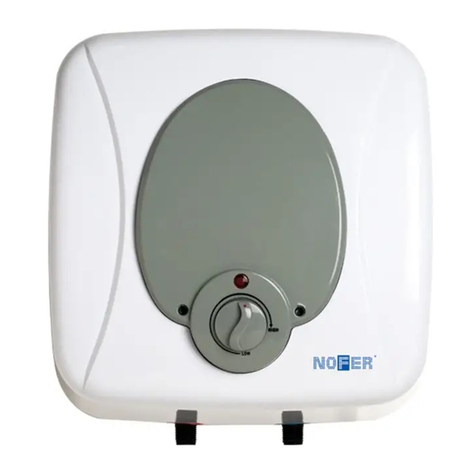
Aparici
Aparici SB30C User and installation manual
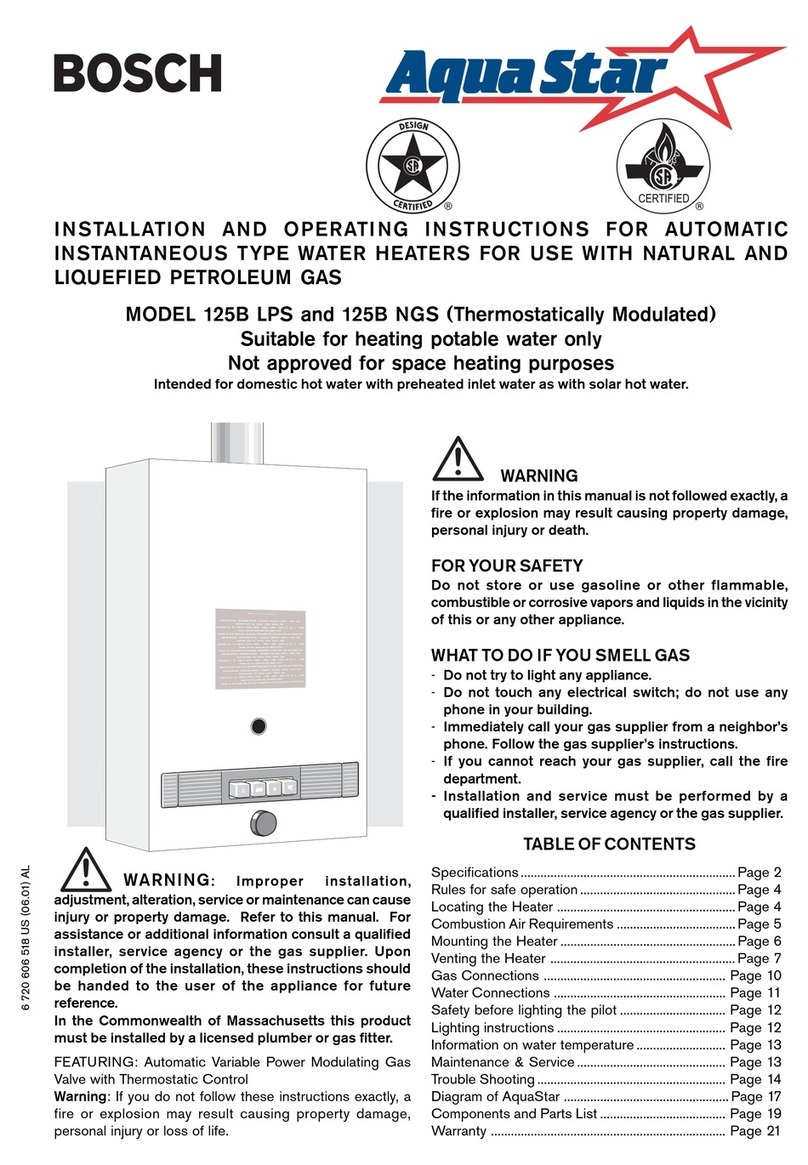
Bosch
Bosch AquaStar 125B NGS Installation and operating instructions
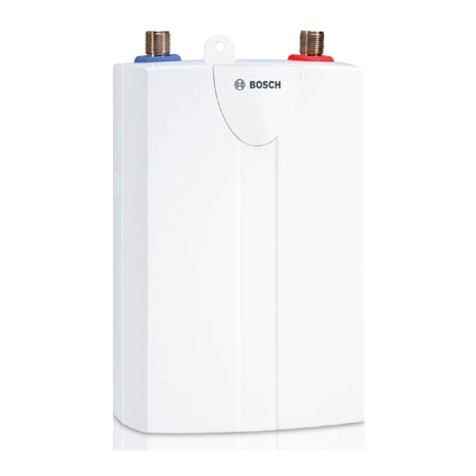
Bosch
Bosch RDH06101 Installation and operating instructions
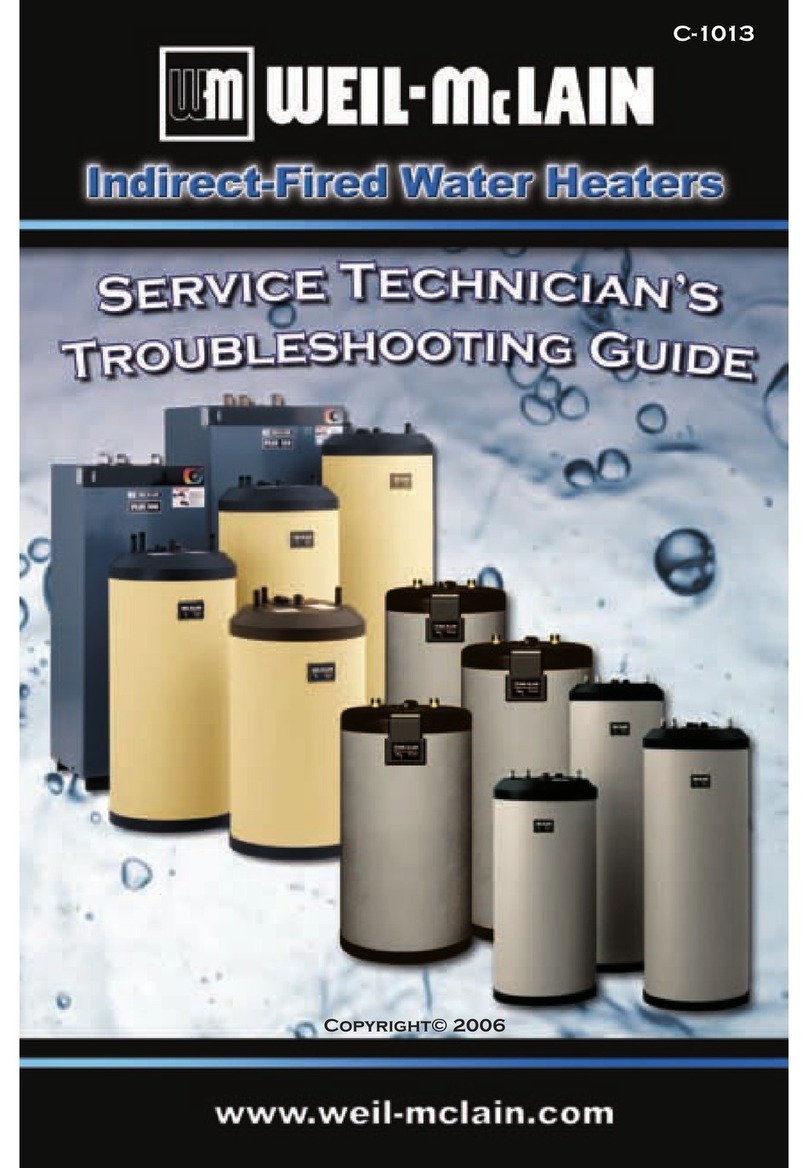
Weil-McLain
Weil-McLain C-1013 troubleshooting guide
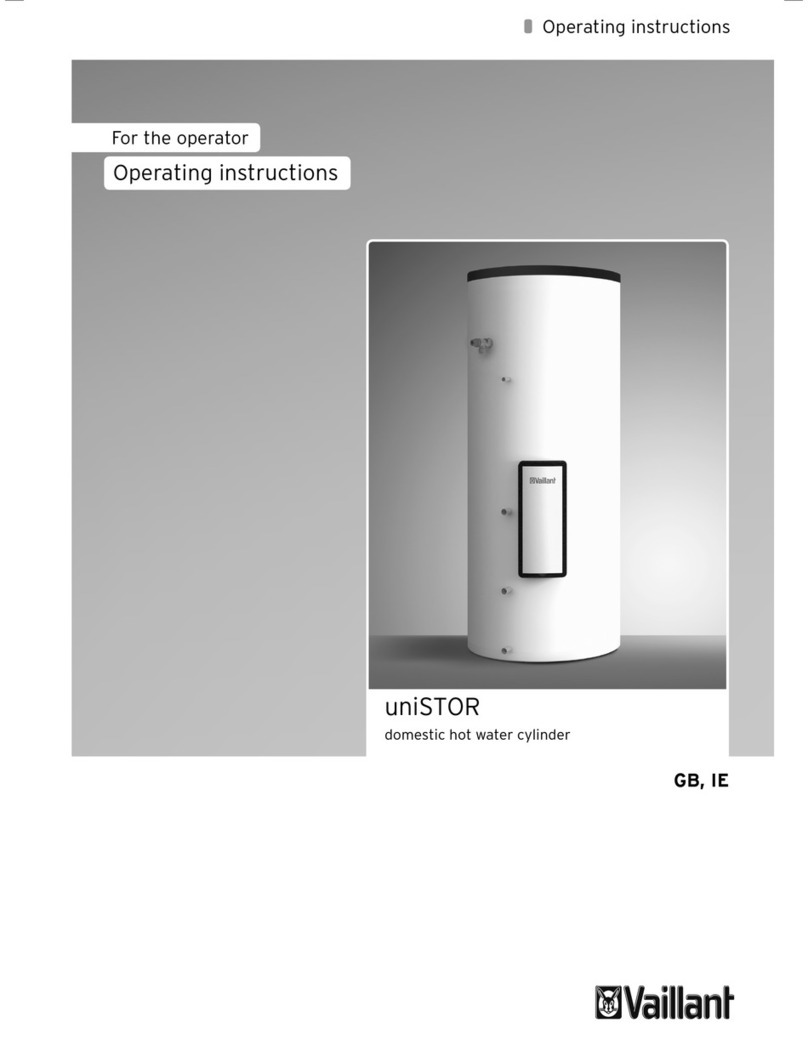
Vaillant
Vaillant uniSTOR operating instructions
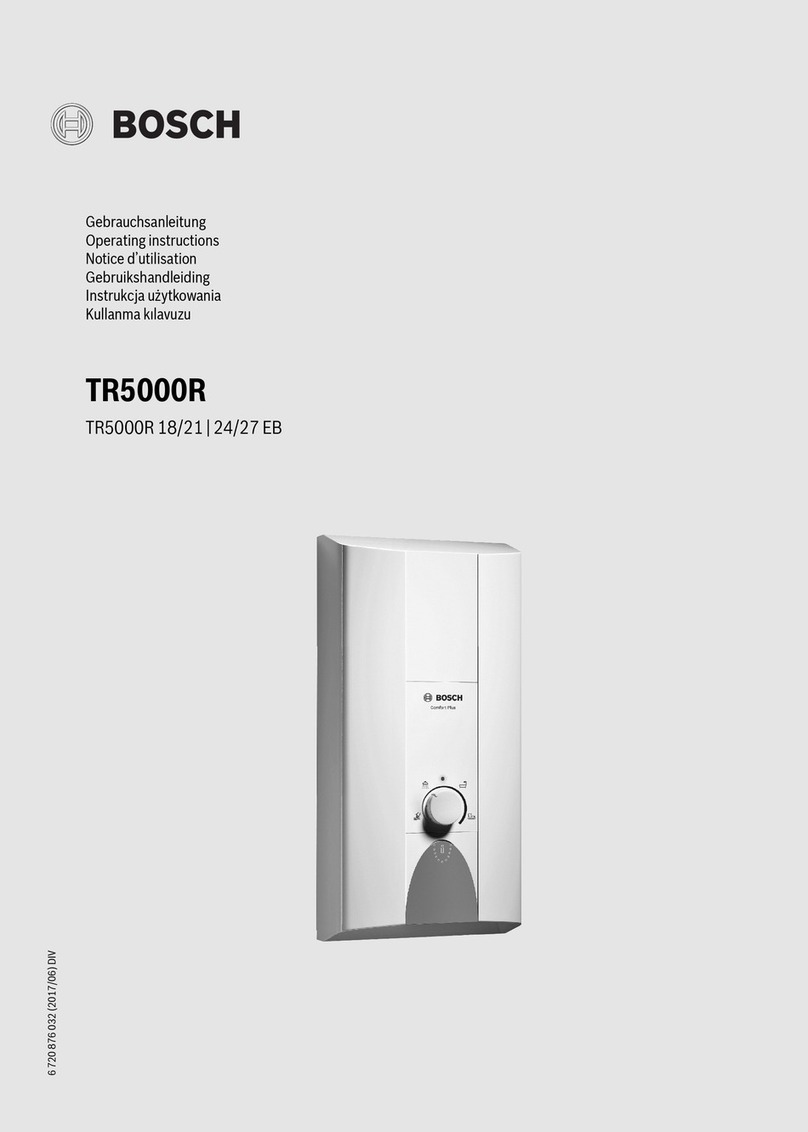
Bosch
Bosch TR5000R 24/27 EB operating instructions
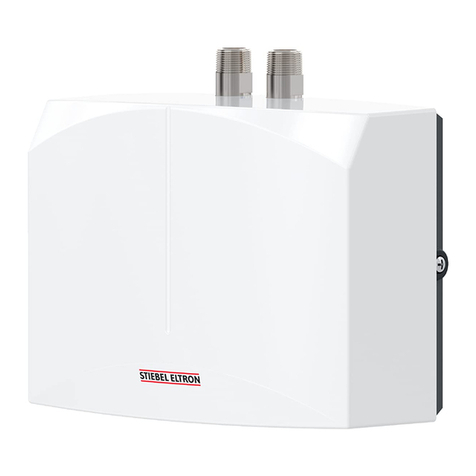
STIEBEL ELTRON
STIEBEL ELTRON DHM 3 Operation and installation
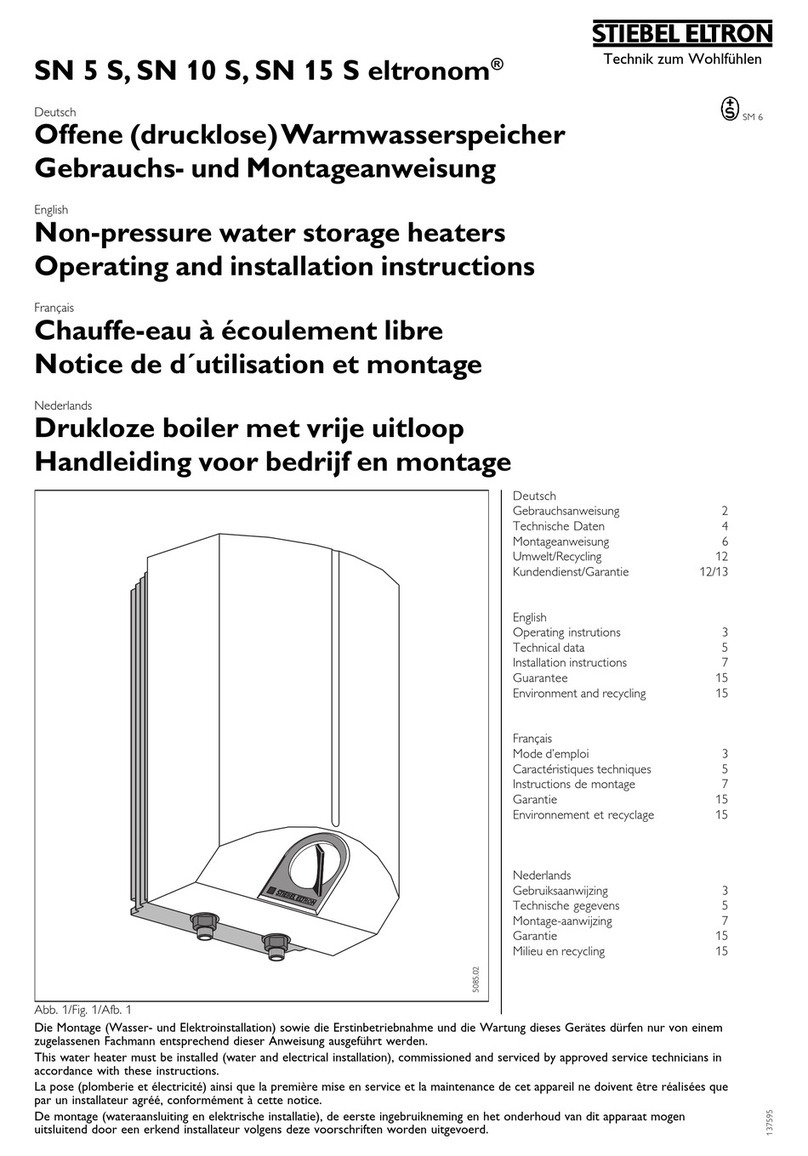
STIEBEL ELTRON
STIEBEL ELTRON SN 5 S Operating and installation instructions

Bradford White
Bradford White UPV75 Series Service manual
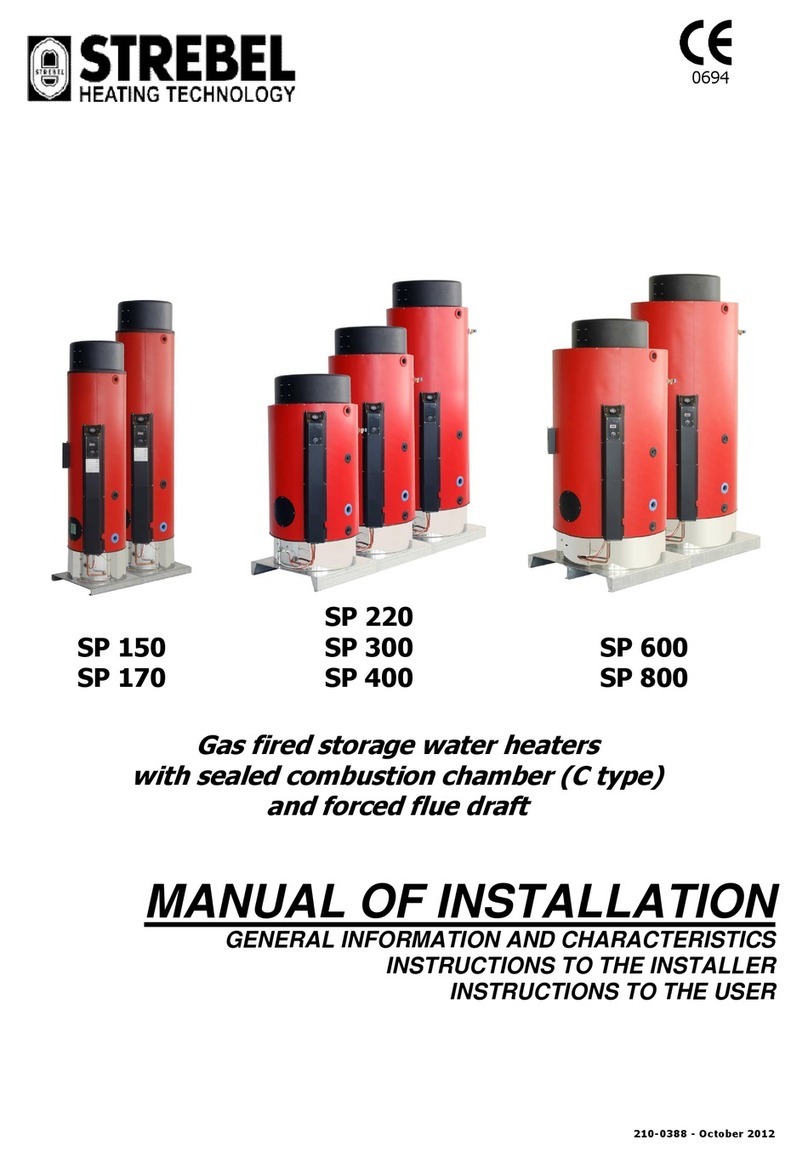
Strebel
Strebel SP 150 installation manual
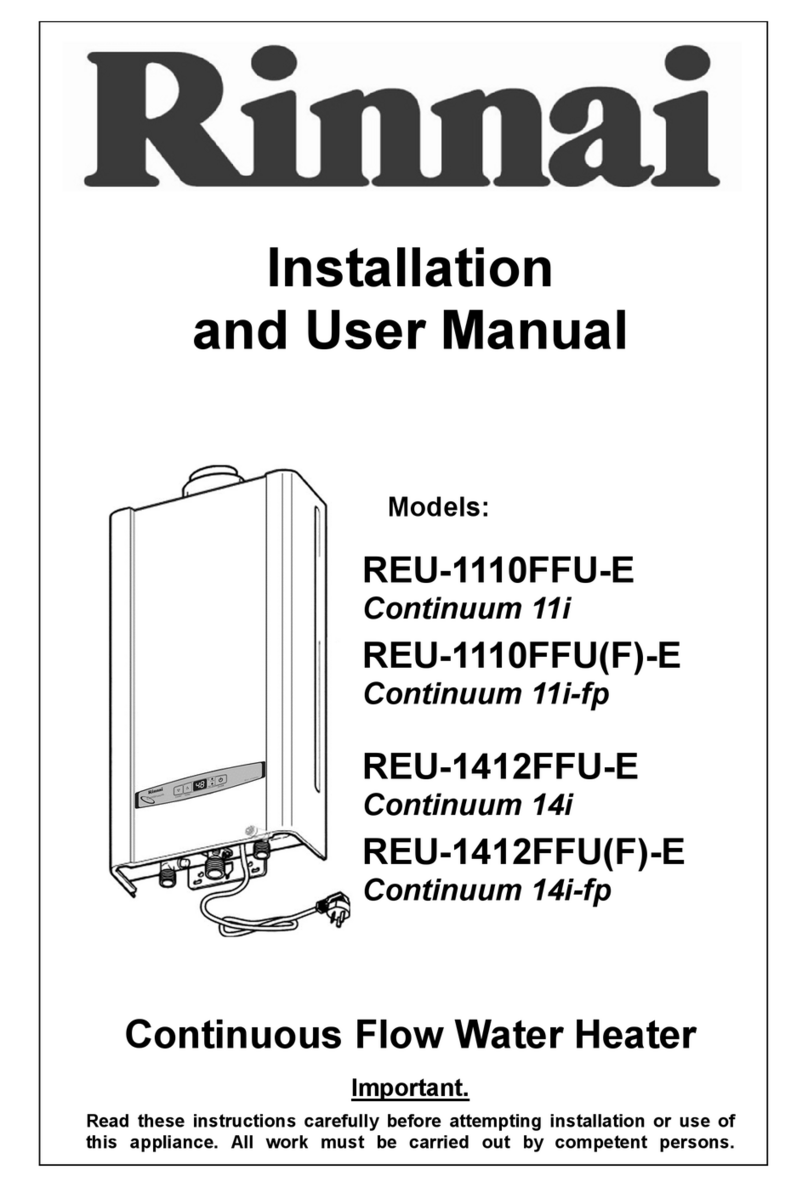
Rinnai
Rinnai REU-1110FFU-E Installation and user manual

JENFORT
JENFORT JH Series Installation and operation manual
